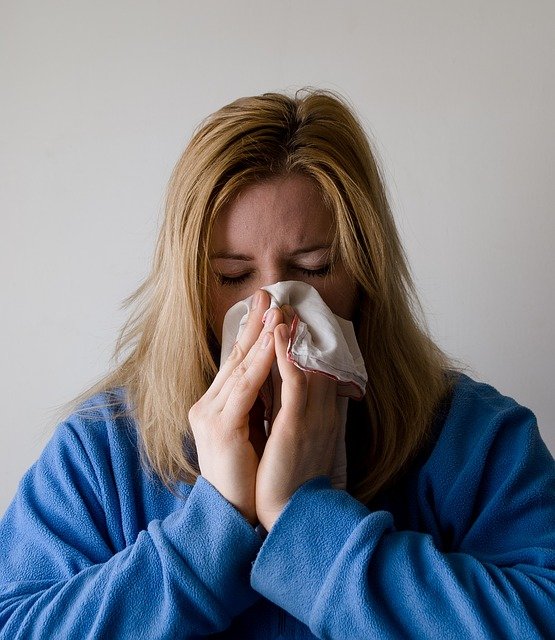
by Tanya Keam | Jan 14, 2022 | Acupuncture, Chinese medicine, Cough, covid19, Food, Immune Support, Immune system, Nambour, Nourishing, Seasonal living, Sunshine coast, Winter
Immune System treatment with Chinese Medicine
Immune system Chinese Medicine and Western medicine treatment approaches are quite different from each other.
When a virus enters the nose and throat, our immune system has receptors that tell the body there is an ‘invasion’, so the body sends helpers to ‘defend’ the body at the sight of infection, so we feel a sore throat come on for example. The immune system can often fight off an infection on its own, other times other invention may be needed.
The treatment for treating a common cold or flu from a western medicine perspective may include pharmaceutical use such as ibropofen to drop a fever, panadol for a headache, your doctor may advise rest and fluids to keep you hydrated. Elderly people are often given a flu shot in Autumn so they can build some antibodies to at least some of the inlfuenza variants in time for when Winter comes around and flu’s are more common.
The treatment for treating a common cold or flu or anything else viral from a Chinese medicine or eastern medicine perspective includes first understanding the onset. One person may come down with a sore throat and headache, another may feel lethargic, stuffy nose and feverish – even with the same variant of virus. The persons’ general health and medical history is also taken into account. For example if someone has chronic asthma but exercises regularly and eats a well balanced diet, compared to someone who is diabetic, obese and may be on multiple medications – they are completely different health status’s and their immune system response to a virus may be vastly different.
Herbal medicine is used at the first onset of symptoms for a virus which presents with flu symptoms and diagnosed usually with 3 seperate clinical presentations:
- Wind cold – runny nose, sneezing, some mucous congestion, fatigue, maybe a slight cough. There are no ‘hot’ symptoms and often happen if we just get caught in the rain or when the winds pick up in Autumn in the southern hemisphere.
- Wind heat – sore throat, swollen glands, headache, fever, achy muscles, lethargy, rapid heart rate and a yellow tongue coating. These are hot symptoms and often we catch this type of pathogen from someone else. Wind cold can sometimes turn into a wind heat pattern if the immune system has a hard time recovering. The mucous will go from clear to white to yellow to green and the fever etc kick in to further fight off the now hotter pathogen.
- Toxic heat and/or with phlegm – this type of condition is when wind heat isn’t resolved and a person gets more sick. They may end up with a lung infection with green or blood streaked sputum or have phlegm in their digestive system which leads to loose or sticky stools as well as lung phlegm that is hard to expectorate.
Depending on the persons constitution, herbal medicine is given as soon as symptoms come on. If you can get herbs into you within the first 12 hrs of a sore throat coming on (a wind heat pathogen for example), the herbs vent, disperse the expel the virus outwards preventing it from going deeper (aches, fever, then going to the chest then do not occur). As well as hydration, a healthy diet and rest. If however a pathogen lingers and nasty cough sticks arounds for weeks, a whole different approach is needed now as not only does the pathogen need to vent but the persons immune system needs some serious support!
Nutrition is a key part in anything cold/flu. Wind heat patterns already have so much heat in the body with fever, sore throats and aches going on we don’t want to add fire to fire so avoiding heating foods such as spicy, chocolate or coffee which create further heat is not recommended. But watermelon which is very cooling on the body also soothes a sore throat. Bonus! When a lot of mucous is present, it is not recommended to consume foods while sick that create more mucous in the body. These include dairy products and foods that have the texture of mashed avocado, peanut butter or bananas – they have ‘sticky’ consistency which is exactly what phlegm is. Whereas as a wind cold presentation would benefit from some spices such as chai tea which have dispersing and slightly warming qualities to balance out that cold invasion. it is a simple balance of cold balances hot, hot balances cold and avoiding those sticky ‘damp’ kind of phlegm foods when you have a chesty cough.
Traditional Chinese medicine consists of multiple facets to healing including acupuncture, cupping and gua sha therapy, massage, herbal medicine, exercise, nutrition and lifestyle recommendations to keep people well and as a way of preventative medicine. The lung energy is very much associated with the immune system so doing exercises that strengthen the lungs such as swimming, yoga, breath work and running build that lung capacity and ‘chi’ (energy). Someone who has Asthma would really benefit from swimming to strengthen the lungs and with the bonus of outside exercise you get Vitamin D too. Many minerals and vitamins found in our foods also support the immune system which is well researched, so eating a well balanced diet with lots of fruit and veggies is looking after you!
Allowing fevers to break on their own (without always reaching for the Ibuprofen) is a good sign your immune system is fighting off an infection. Further intervention is rarely needed when a fever gets high, but shouldn’t be disregarded either as a high fever can cause further illness. Getting a cold or flu every now and then is okay as well as your body creates antibodies to further protect itself for future attacks. Common herbs to strengthen the immune system in Chinese medicine are Huang Qi (Astragalus), Lingzhi (Reishi mushroom) and Bai zhu (Atractylodis Macrocephalae) which can be taken through the cold flu season to boost the immune system.
Here is a simple recipe to help a lingering cough!
If you’d like support in balancing your body and immune system Chinese medicine style then book in for a consult and treatment and we will get your system in great shape! You can book online or contact us at our Sunshine Coast Acupuncture and Chinese Medicine Clinic in Nambour on the beautiful Sunshine Coast.
 Hi, I’m Tanya, an AHPRA registered Acupuncturist, bodyworker and doctor of Chinese medicine in Nambour in the Sunshine Coast hinterland, Queensland Australia. I practice Chinese and natural medicine because its safe, logical, relevant and has effectively shown methods of natural wellness for thousands of years (read more about my training here). Life doesn’t need to be complicated and nor does the treatment approaches to get people feeling vibrant and well. I’ve seen people gain a lot from treatments, much more than just alleviating symptoms. It’s exciting to connect with people and share deep wisdom from the classics of ancient and traditional medicine, with modern protocols for todays mind-body living. See you in the clinic !
Hi, I’m Tanya, an AHPRA registered Acupuncturist, bodyworker and doctor of Chinese medicine in Nambour in the Sunshine Coast hinterland, Queensland Australia. I practice Chinese and natural medicine because its safe, logical, relevant and has effectively shown methods of natural wellness for thousands of years (read more about my training here). Life doesn’t need to be complicated and nor does the treatment approaches to get people feeling vibrant and well. I’ve seen people gain a lot from treatments, much more than just alleviating symptoms. It’s exciting to connect with people and share deep wisdom from the classics of ancient and traditional medicine, with modern protocols for todays mind-body living. See you in the clinic !
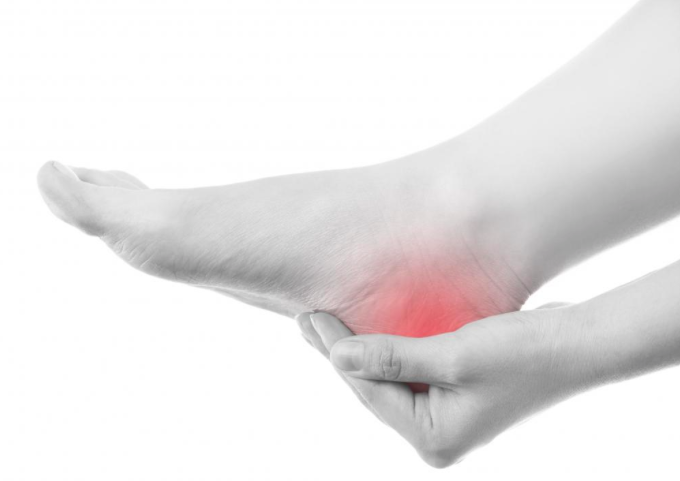
by Tanya Keam | Nov 1, 2019 | Acupuncture, Chinese medicine, Client information, Exercise, Health practitioner, Heel pain, Joint pain, Muscle pain, Nambour, Pain, Plantar Fasciitis, Sunshine coast
Acupuncture for Plantar Fasciitis
Imagine crawling out of bed, half asleep and feeling the pain of standing on a nail or a hot amber right in your heel. You crumble, knees buckle, jaw clenched in pain … this is Plantar Fasciitis! Acupuncture for Plantar Fasciitis.
What is Plantar Fasciitis?
The plantar fascia is a piece of strong and thick tissue that runs along the bottom of the foot. It connects the heel bone to the toes, creating the foot’s arch. Plantar fasciitis is inflammation of the plantar fascia.
It can be caused by:
- Playing certain sports that put stress on the heel bone or recent increased activity
- Flat-footed, high arches or collapsing arches
- Being overweight
- Pregnancy
- Muscle tension in the legs
- Standing for long periods
- Standing on hard surfaces
- Heel spur
- Injury
- Wearing incorrect shoes
- Misalignment of the pelvis or hips
Based on an Australian local population study of 3206 participants, the prevalence of heel pain was 3.6% (1).
What are the symptoms of Plantar Fasciitis?
Pain! Which tends to be aggravated by:
- Long periods of standing or sitting
- When you first step out of bed in the morning and place your feet on the ground
- After increased physical activity in the lower half the body
How do you know if you could be experiencing Plantar Fasciitis?
Because pain is the main debilitating symptom, in most cases diagnosis is by the presenting symptoms and location of pain in the heel. The achilles tendon is also examined for inflammation. Further investigations such as ultrasound or X-ray may be used to rule out other conditions.
How is Plantar Fasciitis treated?
- Pain relief medications
- Steriod injections into the heel
- Activity adjustments or rest
- Appropriate stretching
- Acupuncture therapy
- Massage therapy
- Sole inserts for shoes
- Change in footwear or padding when standing for long periods
- Rest
- Nutritional adjustments
The most effective treatment plan for Plantar Fasciitis is to first remove the cause, then apply stretching and treatment which results in resolving inflammation and pain.
Chinese medicine views of Plantar Fasciitis
Predominantly with the view that there is a stagnation in the flow of Blood and Qi in the affected are, this may also be accompanied by heat in the local area (inflammation). For this condition, a combination of Chinese Medicine practices may be used.
How can Chinese medicine help?
Firstly, figure out the cause, then apply the correct treatment.
Structural alignment of the body – Assessing whether your pelvis/hips or spine is out of alignment determines whether your feet are hitting the ground correctly.
Diet – Modern understanding of gut health has shown poor gut function can significantly increase inflammation in the body. Looking into your nutrition and your eating habits may assist overall health and therefore provide pain relief for issues such as Plantar Fasciitis and also prevent inflammation.
Nutritional supplementation – Foods and herbs can be useful for reducing inflammation. Such as Omega’s, Tumeric and Magnesium.
Acupuncture – Trials have showed potential positive effects in the treatment for Plantar Fasciitis. Acupuncture can be effective at reducing muscle tension and as such can help to reduce the pressure and strain on the fascia in Plantar Fasciitis. Electro-acupuncture coupled with conventional treatments (stretching exercises, shoe modification and analgesics) provided a success rate of 80% in chronic Planar Fasciitis which was more effective than conventional treatments alone (2). Future research should recognise the complexity of plantar heel pain, of acupuncture and of the relationship between them, to explore the optimum use and integration of this approach (3).
Other techniques – massage, cupping, gua sha, liniments to accompany acupuncture.
Lifestyle recommendations – Adjustment of posture, specified stretches, appropriate footwear and prevention about contributing factors that may be aggravating the condition.
If you are suffering from plantar fasciitis or believe you may have something similar such as burning heel pain please contact us today to discuss how we can help you at our Sunshine Coast Acupuncture clinic with your plantar fasciitis or other pain conditions.
 Hi, I’m Tanya, an Acupuncturist and health practitioner in Nambour on the Sunshine Coast, Queensland Australia. I practice Chinese medicine because its safe, logical, relevant and has effectively shown methods of natural wellness for thousands of years (read more about my training here). Life doesn’t need to be complicated and nor does the treatment approaches to get people feeling vibrant and well. I’ve seen people gain a lot from treatments, much more than just alleviating symptoms. It’s exciting to connect with people and share deep wisdom from the classics of ancient and traditional medicine, with modern protocols for todays mind-body living. See you in the clinic !
Hi, I’m Tanya, an Acupuncturist and health practitioner in Nambour on the Sunshine Coast, Queensland Australia. I practice Chinese medicine because its safe, logical, relevant and has effectively shown methods of natural wellness for thousands of years (read more about my training here). Life doesn’t need to be complicated and nor does the treatment approaches to get people feeling vibrant and well. I’ve seen people gain a lot from treatments, much more than just alleviating symptoms. It’s exciting to connect with people and share deep wisdom from the classics of ancient and traditional medicine, with modern protocols for todays mind-body living. See you in the clinic !
References:
- Source- Allan J Pollack, Helena Britt (2015) Plantar fasciitis in Australian general practice Volume 44, No.3, 2015 Pages 90-91, Retrieved from https://www.racgp.org.au/afp/2015/march/plantar-fasciitis-in-australian-general-practice/
- The American Journal of Chinese Medicine, An International Journal of Comparative Medicine East and West. Efficacy of Electro-Acupuncture in Chronic Plantar Fasciitis: A Randomized Controlled Trial. Wipoo Kumnerddee and Nitsara Pattapong. Issue 06, Volume 40, 2012. Retrieved from https://www.worldscientific.com/doi/abs/10.1142/S0192415X12500863
- Clark Richard J, Tighes Maria, The Effectiveness of Acupuncture for Plantar Heel Pain: a systematic review. Acupuncture in Medicine. October 2012. Retrieved from https://journals.sagepub.com/doi/abs/10.1136/acupmed-2012-010183https://journals.sagepub.com/doi/abs/10.1136/acupmed-2012-010183
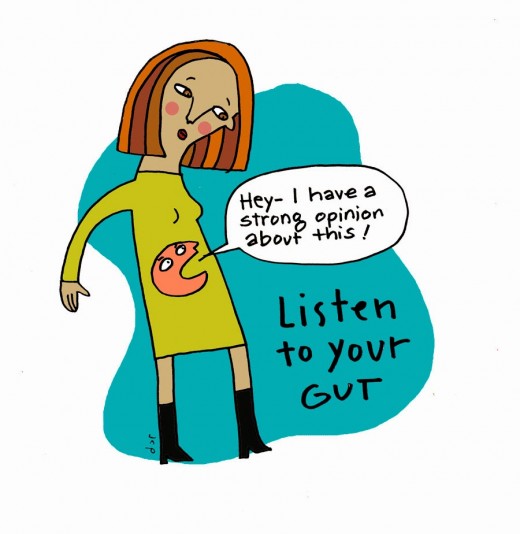
by Tanya Keam | Sep 26, 2018 | Acupuncture, Anxiety, Chinese medicine, Client information, DIY Wellness Tips, Emotions, Gut flora, Liver Health, Mental health, Rest, Sleep, Sunshine coast, Uncategorized
Have you ever experienced a ‘gut feeling’? Sometimes accompanied by butterflies in your stomach, a strange feeling in your abdomen or food isn’t digesting well because life has been a bit h E c T i C? We’ve all been there – someone’s energy doesn’t sit right with us, eating on the run or while multitasking 5 different things, pent up emotions or general daily worry of what to do, what to do.. you’re not alone. I’ve been doing a lot more study around gut-brain connection as well as adrenal health this year and by golly, the 21st century is all about RUSHING. This time of year in October, people start to get tired and stressed with only 2-3 months left until the dramatic Christmas season. Already, people are visiting the clinic worn out and running on their reserves. Just take a moment, to take a deep breath, to check in with where you are at.
Today’s living involves a lot of low level anxiety over multi tasking, relying on coffee/stimulants to wake us up, too rich food, restless sleep, social media, lack of exercise and real fun, financial pressure and general trying to ‘have it all’ or merely keep up. I recently read a book called ‘Slow’ by Brooke McAlary and it is literally about living a slower life. To come back into a state of rest and digest so that sleep is sound and restorative, moods are better, you aren’t relying on coffee/stimulants and you’re recognising your own values and what really matters to you.
Nerve pathways run throughout our body, assisting in all things function. Concentration, digestion, respiration for example are all connected in a linking system. The vagus nerve is the longest cranial nerve that starts in the brain and connects through to our neck and chest, then linking to the abdomen. The vagus nerve is involved with the parasympathetic (rest and digest – when you feel calm and grounded) and the sympathetic (fight-flight – a natural response from stress, when adrenaline kicks in). Both (parasympathetic and sympathetic) are needed to function. Sometimes though, the fight-flight response gets a little overworked – when we push ourselves, when life has thrown us curve balls all at once, pressures of keeping up with everyone else, post traumatic symptoms from trauma and simply feeling anxious and worrying too much. What happens – our gut is affected ! Not to mention pain in the body, fatigue etc.
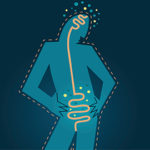
Chinese medicine offers some relieving perspective for easing back into the rest and digest state of being by addressing the pathology at its root. When an issue is rectified at the root level, innate processes within you start to take over in a positive domino effect.
Examples include using acupuncture to:
- Regulate the circadian rhythm (the sleep cycle) so that your hormones and metabolism naturally function well and you wake feeling refreshed, therefore you’re not relying on coffee to perk you up. Not to mention healthy weight and all things gynaecological for woman is smooth sailing throughout monthly cycles.
- Regulate and strengthen your immune and digestive function so that you are absorbing nutrients properly, your bowel movements feel great and your energy is therefore good too!
- Unblock stagnant energy in the body from built up stress, tight muscles, poor posture, repressed emotions and that funny gut feeling when worries build up.
- Supporting your body to prevent overstimulated adrenaline – there is only so many times you can push your adrenals before it becomes detrimental to your health long term.
The vagus nerve doesn’t need to be shocked into shape. It can be toned and strengthened similar to a muscle with small mindful changes to bring you back into feeling cool, calm and collected where you can take a big deep abdominal breath, shaking that funny gut feeling.
Other ways to stimulate the vagus nerve and bring you back into rest and digest ways of being include:
- Gargling – stimulates the palate which is fired by the vagus nerve.
- Singing and chanting – increases the heart rate, sending relaxing vibrational waves through the vagus nerve that passes through the neck.
- Laughing – bursts of joy are natural immune boosters. A good laugh can also be followed by coughing, swallowing and bowel movements which all are connected through where the vagus nerve travels.
- Yoga and Tai chi – both increase the rest and digest activity and studies show regular yoga practices increase the feel good neurotransmitters in the brain.
- Positive social relationships – research has suggested that thinking compassionately about others naturally increases feelings of joy, hope and serenity which therefore increases the heart rate, thus stimulating the vagus nerve in a positive domino effect.
- Deep breathing and meditation – your heart and neck contain neurons that have receptors which detect blood pressure and transmit information to your brain. This activates the vagus nerve that connects through to your heart to lower the heart rate and blood pressure. Breathing the equal amount in as out can be very helpful, and you may even notice you naturally breathe shallowly or mildly hyperventilate which then leads to anxiousness.
- Exercise – shown to stimulate the vagus nerve which then benefits the brain and mental health. As the vagus nerve also connects to digestion, your gut is also stimulated when exercising – increasing blood flow, expanding the diaphragm through breathing and moving pent up stuck emotional stress.
- Colonic hydrotherapy – expanding the bowel increases vagus nerve stimulation and increases the livers detoxifying pathways.
- Bursts of cold – washing your face with cold water stimulates the vagus nerve via temperate change and “always takes the edge off” when you’re in a state of panic, stress or mindlessness. A quick 10 seconds of cold water at the end of your morning hot shower can have a similar effect.
- Learning to CHILL OUT may just be what the doctor ordered. Learning to ‘do nothing’ on weekends, say no to social events when you are tired, and living in a state of your own values and rest.
- Trusting your gut feeling is a good way to intuitively check in with yourself to give you a heads up about whether you’re in rest and digest mode or fight-flight mode. Most relaxing activities will stimulate the vagus nerve, thus bringing you into a natural state of peace.
 Hi, I’m Tanya, an Acupuncturist in Nambour on the beautiful Sunshine Coast, Australia.
Hi, I’m Tanya, an Acupuncturist in Nambour on the beautiful Sunshine Coast, Australia.
I practice Chinese medicine because its safe, logical, relevant and has effectively shown methods of natural wellness for thousands of years. Life doesn’t need to be complicated and nor does the treatment approaches to get people feeling vibrant and well. I’ve seen people gain a lot from treatments, much more than just alleviating symptoms. It’s exciting to connect with people and share deep wisdom from the classics of ancient and traditional medicine, with modern protocols for todays mind-body living. See you in the clinic !
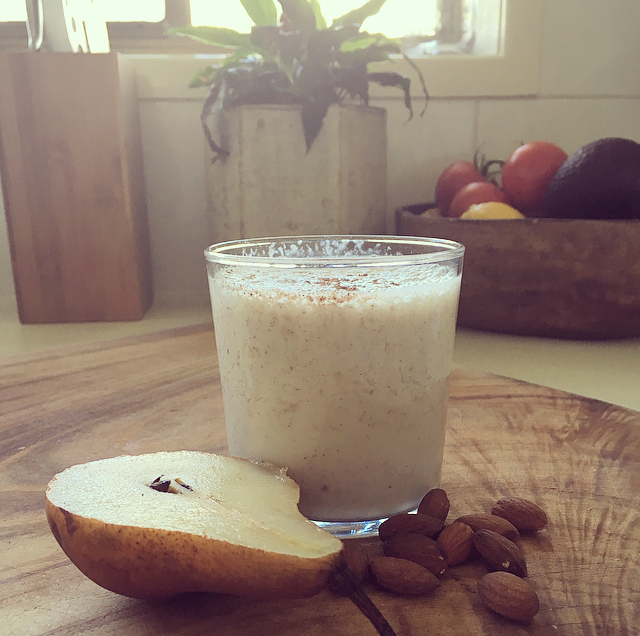
by Tanya Keam | Jun 11, 2018 | Acupuncture, Chinese medicine, Client information, Cough, Dairy alternatives, Dairy free, DIY Wellness Tips, Food, Herbal remedies, Homemade, Immune Support, Immune system, Nambour, Nutrition, Recipes, Seasonal living, Smoothie, Sunshine coast, Vegan, Vegetarian, Wellness, Winter
A simple Chinese Medicine cough recipe
Chinese medicine is seasonal medicine – what better way to take care of yourself than a cough recipe to look after you this season. In Winter it is recommended to consume less cold and raw food as it harsh on our digestive system to process, which is a balmy 36.5 degrees inside. Putting something the temperature of the fridge in a nice warm coldren stomach, first takes energy to warm it before it can digest it. This can lead to fatigue, bloating, and loose bowel movements.
In late Autumn and Winter we opt for:
- More warming foods such as soups and stews to warm us up from the inside!
- Smoothies are generally not recommended in Winter at all as they are too cold. However putting a wonderful twist on the conventional fruit smoothie so that is warming not only for our digestive system but designed to benefit the lungs and relieve coughs.
The main ingredient, pears, is highly valued in Chinese medicine as the fruit that is most beneficial for coughs. What does Autumn and Winter bring? You guessed it, coughs!
Pears are “sweet, slightly sour, and cool.” They “generate fluids” but also “dissolve phlegm,” so they are ideal for treating dry coughs, a hoarse voice, thirst and agitation in general.
Our second key ingredient is almonds which is also a great dairy alternative in smoothies. Almonds have similar properties to apricots in Chinese medicine, with apricot seeds being used as one of the key medicinals for treating coughs. Almonds are not as potent as apricot seeds (which have some mild toxicity and shouldn’t be consumed on a regular basis), but they do have some similar properties – moistening the lungs, relieving coughing and wheezing. That makes them the perfect complement to pears in this smoothie.
This recipe is specific for almond milk which helps resolve phlegm, so don’t switch it up for dairy milk as dairy is more phlegm forming.
Chinese Medicine Cough Recipe (Spiced Pear Smoothie with Almonds and Chia)
Serving size: About 1-2
Ideal for high speed blender
Ingredients
1 Pear (room temperature)
¾-1cup Almond Milk (how thick do you like it?)
10 natural Almonds (soaked overnight in water if possible, otherwise raw is fine)
¼-1/2 teaspoon Garam Masala spice
Dash Cayenne pepper or Cinnamon (to keep the digestive system warm)
1 tablespoon Chia Seed (can be soaked in almond milk prior for 15 minutes to turn into a jelly)
1-2 teaspoons Manuka honey
NO ICE !
Directions
Blend all ingredients until smooth. Enjoy!
Take care this Winter, there has already been many colds and influenza floating around.
 Hi, I’m Tanya, an Acupuncturist and Chinese medicine practitioner in Nambour on the Sunshine Coast, Queensland Australia. I practice Chinese medicine because its safe, logical, relevant and has effectively shown methods of natural wellness for thousands of years (read more about my training here). Life doesn’t need to be complicated and nor does the treatment approaches to get people feeling vibrant and well. I’ve seen people gain a lot from treatments, much more than just alleviating symptoms. It’s exciting to connect with people and share deep wisdom from the classics of ancient and traditional medicine, with modern protocols for todays mind-body living. See you in the clinic !
Hi, I’m Tanya, an Acupuncturist and Chinese medicine practitioner in Nambour on the Sunshine Coast, Queensland Australia. I practice Chinese medicine because its safe, logical, relevant and has effectively shown methods of natural wellness for thousands of years (read more about my training here). Life doesn’t need to be complicated and nor does the treatment approaches to get people feeling vibrant and well. I’ve seen people gain a lot from treatments, much more than just alleviating symptoms. It’s exciting to connect with people and share deep wisdom from the classics of ancient and traditional medicine, with modern protocols for todays mind-body living. See you in the clinic !
Contact me
Book online
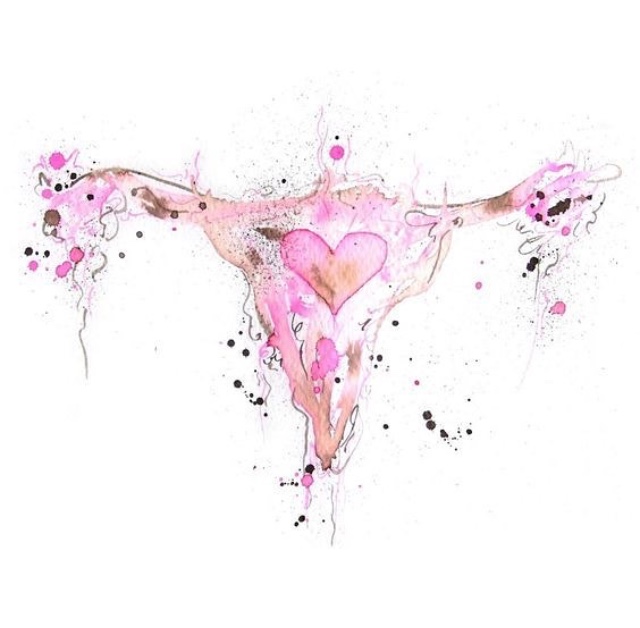
by Tanya Keam | Jun 4, 2018 | Acupuncture, Chinese medicine, Client information, Daily Rituals, DIY Wellness Tips, Fertility, fertility acupuncture, Food, Hormones, Menstrual cycle, Nambour, pregnancy, Sunshine coast, Wellness, Womens health
Chinese Medicine helps balance hormones with simple nutrition changes. Let’s look at the cultural differences first.
Many Western women treat their menstrual cycle as biological pre-determined:
* Painful or not
* Long or short
* Regular or irregular
* Clear skin or break outs
Many women stay on the contraceptive pill for 15+ years “for reasons such as clearer skin and fewer headaches”, when they haven’t had a proper period since they were teenagers. Remember the contraceptive pill only mimics a period, any bleeding that occurs is due to withdrawal of the pill. Thus, menstrual cycles and having a baby are treated like it’s all an act of fate, that their cycles will automatically regulate post pill – when the contraceptive pill actually turns off ovulation.
While in Eastern cultures, women believe that it is imperative that they take certain care to look after their cycles throughout their entire life.
What does this mean?
Firstly, there are genetic pre-dispositions that we all face with our health, but that doesn’t mean we have to go down the same path as our ancestors. I once heard a quote “Our genes load the gun, but our environment is what pulls this trigger”. In other words our daily life habits and individual environments are important to change these patterns to prevent illness and maintain wellness.
In the east, women live by a rule that it is very important to not eat cold foods during one’s period and to rest for a month after giving birth. Why so?
Chinese medicine helps balances hormones by looking at 4 concepts – hot, cold, excess and deficient. As an example, ‘excess’ means too much, while ‘deficient’ means too little. These concepts describe basic pathological states that are to be addressed in treating gynaecological health. An excess pattern can be seen as Endometrial fibroids inside the pelvic cavity (otherwise known as a blockage), while a deficient pattern can be seen as a very light or no period present at all. In relation to temperatures, the hot and cold nature of food is distinctive from the physical temperature of food, yet both states mutually reinforce each other.
Consuming cold foods during your cycle
Chinese medicine helps balance hormones by recommending to not consume cold foods just before or during the menstrual cycle. The reason is that ‘cold’ has the property of contracting and constricting, while ‘warmth’ is more moving and flowing. The key to healthy, manageable and pain free cycles is to maintain the proper flow of discharge of menstrual blood on a regular monthly basis. This includes the quality of the menstrual blood – not too dark and clotted or too little and light coloured.
Many women visit the clinic and say “My period is always quite painful and I feel like I can’t quite function for a couple of days but it’s just my normal”. Just because this is the way you have always felt in your cycle, does not mean it is okay or healthy. There are better ways so let’s keep reading …
Cold foods and bodily exposure to cold temperatures just before or during menstruation can cause painful cramps and in certain situations lead to ongoing gynaecological issues. Swimming on your period is a big NO NO in Chinese medicine – you guess it.. Cold! While you are menstruating, the cervix is more open, leading the cooler temperature of the water to lodge inside your pelvic cavity. The advancement of tampons made life a little easier for women, but if you can miss a swim on day 1-3 of your cycle, your health will thank you for it.
I have found that in my clinical practice that almost all of my patients with digestive complaints in one form or another have come to understand this basic understanding of temperatures and how Chinese medicine helps balance hormones this way. For these patients, physically cold foods such as salads or too many smoothies with ice and raw fruit, will exacerbate their digestive complaints and therefore upset the natural rhythms of their cycles. Even symptoms such as bloating can be resolved by reducing cold foods and drinking room temperature water.
Some women can object and say they can eat a very cold diet of raw vegetables, drink ice water and swim to their hearts content and have pain free, non-clotted, easy flowing periods! Yes, some women don’t seem to be as vulnerable as others, but that doesn’t validate the principles in general. These women may experience ‘contracting and constriction’ in other areas of their health, such as tension headaches, acne, breast tenderness, mood swings and pain elsewhere in the body.
To learn more about the specific nature of how food is determined cold, neutral or hot, or to learn more about how Chinese medicine help balances hormones with acupuncture and herbal medicine, then get in touch.You can contact me or you can now book online.
 Hi, I’m Tanya, an Acupuncturist and Chinese medicine practitioner in Nambour on the Sunshine Coast, Queensland Australia. I practice Chinese medicine because its safe, logical, relevant and has effectively shown methods of natural wellness for thousands of years (read more about my training here). Life doesn’t need to be complicated and nor does the treatment approaches to get people feeling vibrant and well. I’ve seen people gain a lot from treatments, much more than just alleviating symptoms. It’s exciting to connect with people and share deep wisdom from the classics of ancient and traditional medicine, with modern protocols for todays mind-body living. See you in the clinic !
Hi, I’m Tanya, an Acupuncturist and Chinese medicine practitioner in Nambour on the Sunshine Coast, Queensland Australia. I practice Chinese medicine because its safe, logical, relevant and has effectively shown methods of natural wellness for thousands of years (read more about my training here). Life doesn’t need to be complicated and nor does the treatment approaches to get people feeling vibrant and well. I’ve seen people gain a lot from treatments, much more than just alleviating symptoms. It’s exciting to connect with people and share deep wisdom from the classics of ancient and traditional medicine, with modern protocols for todays mind-body living. See you in the clinic !
Research:

 Hi, I’m Tanya, an AHPRA registered Acupuncturist, bodyworker and doctor of Chinese medicine in Nambour in the Sunshine Coast hinterland, Queensland Australia. I practice Chinese and natural medicine because its safe, logical, relevant and has effectively shown methods of natural wellness for thousands of years (read more about my training here). Life doesn’t need to be complicated and nor does the treatment approaches to get people feeling vibrant and well. I’ve seen people gain a lot from treatments, much more than just alleviating symptoms. It’s exciting to connect with people and share deep wisdom from the classics of ancient and traditional medicine, with modern protocols for todays mind-body living. See you in the clinic !
Hi, I’m Tanya, an AHPRA registered Acupuncturist, bodyworker and doctor of Chinese medicine in Nambour in the Sunshine Coast hinterland, Queensland Australia. I practice Chinese and natural medicine because its safe, logical, relevant and has effectively shown methods of natural wellness for thousands of years (read more about my training here). Life doesn’t need to be complicated and nor does the treatment approaches to get people feeling vibrant and well. I’ve seen people gain a lot from treatments, much more than just alleviating symptoms. It’s exciting to connect with people and share deep wisdom from the classics of ancient and traditional medicine, with modern protocols for todays mind-body living. See you in the clinic ! 







